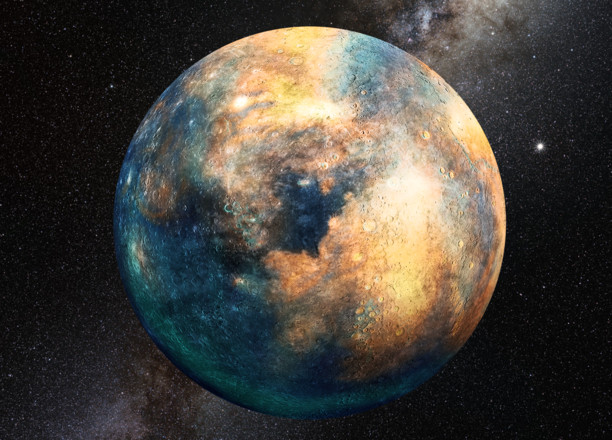Discovering the undiscovered '10th Planet' in the Solar System?
The outer edge of our solar system is hiding a large object the size of Mars, and this is most likely the 10th planet orbiting the Sun.
This unspecified world, called "The 10th Planet" , was made after scientists discovered that icy objects in an area outside of Neptune have odd orbits.
The reason for this strange trajectory has not been explained, and researchers think that a large mass of planets, can cause these strange changes.
According to researchers at the University of Arizona (USA), this group of mysterious cosmic objects showed its presence by controlling the orbital planes of a population of cosmic rocks called Kuiper belt object (KBO ) in the icy periphery of the solar system.

KBO are fragments left over from the formation of the solar system.
The Earth and similar planets orbit the Sun on the same plane, but KBOs are far smaller than the gravitational influence of larger planets that can orbit the Sun at opposing angles. with this plane in "tilted trajectory".
KBO are remnants of the formation of the solar system, and most of them orbit the orbit, also known as tilt , at what scientists call "the plane change".
However, the researchers calculated that the KBOs at the outer edges of the Kuiper belt orbit at an angle of eight degrees relative to the constant plane.
This, according to them, means that the gravity of a large mass - possibly a new planet - is pulling them up.
The Kuiper belt is a halo-like ice zone that opens from Neptune to about 55 times longer than the Sun than the Earth.
It is thought to be a remnant of collisions and chaos that led to the formation of planets.
There are about 33,000 objects on a range of 60 meters in this belt and three dwarf planets.
In their research, the researchers examined the angle of the orbital planes of more than 600 objects in the Kuiper belt.

Kuiper belt simulation image.
They found that KBOs that exceed 50 AU from Neptune tend to tilt, calculations need to be attributed to an object the size of Mars. AU is a conventional length unit used in astronomy to measure distances in space. The length of this unit is the average distance from the Earth to the Sun, ie about 150 million km.
Dr. Volk told New Scientist this object, possibly the 10th planet in our solar system, may have reached the outer perimeter after colliding with another planet.
Dr Volk said: "If it's the size of Mars, it's a huge object."
This new object is much different, and much closer to Earth, than the so-called 9th planet discovered last year, a planet whose existence has not yet been confirmed.
A study published this week showed the existence of the 9th planet after scientists first discovered this large object in the Kuiper belt last year.
- Sizing of the 10th 'planet'
- Miraculously discovering the 'forbidden planet' in the Solar System
- Not only the 9th planet, the solar system can own the 10th and 11th planets
- Evidence of the 9th planet of the Solar System
- Explore the atmospheric atmospheres of the solar system
- 99.99% has the 9th planet in the solar system
- Journey 'hunt' candidate for the 9th planet
- The 9th planet can cause disaster for the solar system
- Discovering the twin planet of Jupiter
- The mysterious X planet is devastating the solar system
- NASA first admitted to having a strange planet hidden in the Solar System
- December 28: Galileo discovers a new planet in the solar system
 Van Allen's belt and evidence that the Apollo 11 mission to the Moon was myth
Van Allen's belt and evidence that the Apollo 11 mission to the Moon was myth The levels of civilization in the universe (Kardashev scale)
The levels of civilization in the universe (Kardashev scale) Today Mars, the sun and the Earth are aligned
Today Mars, the sun and the Earth are aligned The Amazon owner announced a secret plan to build a space base for thousands of people
The Amazon owner announced a secret plan to build a space base for thousands of people